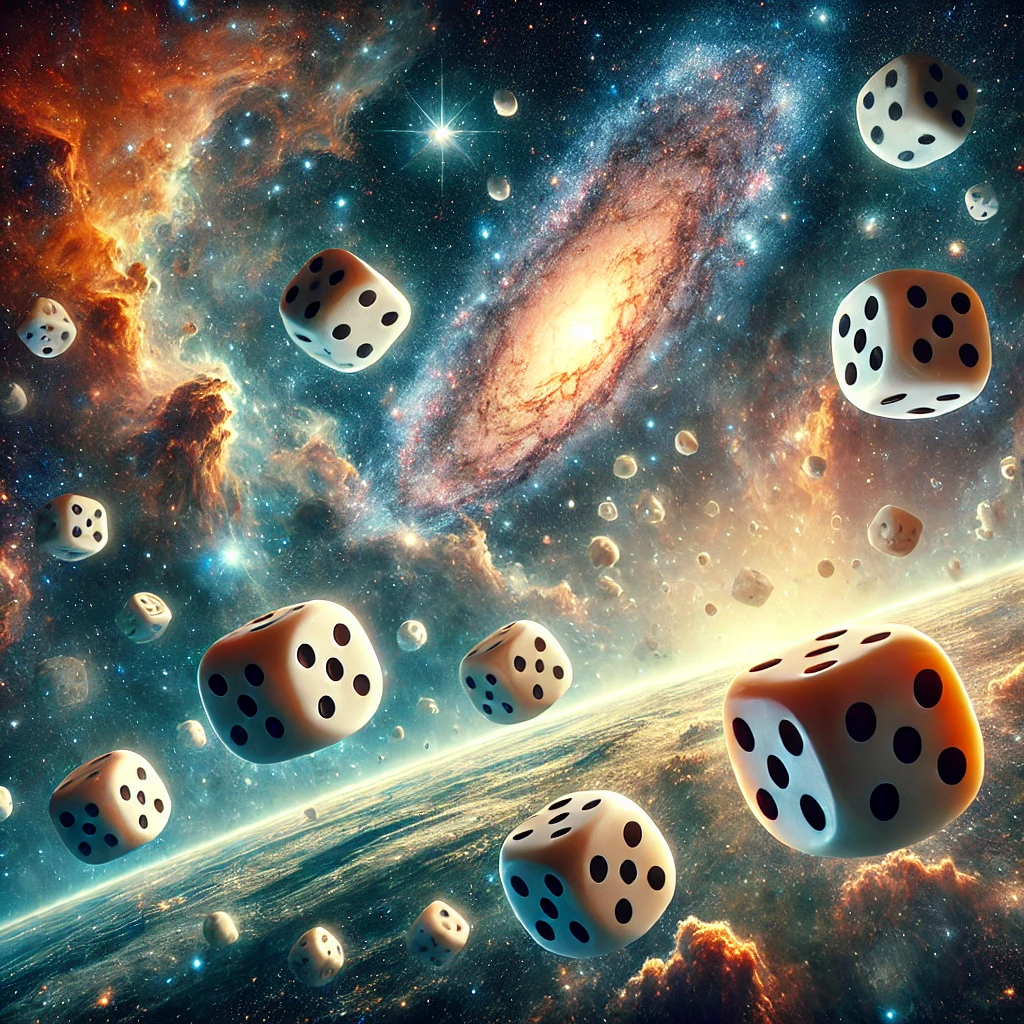
The probability of a protein forming made by chance is 1 X 10/77
The Probability of a Single Protein Forming by Chance and Finding a Needle in a Galactic Haystack
Let’s talk numbers, shall we? Specifically, let’s talk about probabilities so mind-boggling that they make finding a needle in a haystack seem like a child’s play. Fasten your seatbelt because we’re about to dive into the wild world of proteins, atoms, and why creating a protein by pure chance is about as likely as winning the intergalactic lottery.
The Chance of a Protein Forming by Random Luck is 1 in 10^77
To grasp this, picture a tiny protein that’s about 150 amino acids long. Now, proteins aren’t just any old strings of amino acids—each one must be in exactly the right order to function. The probability of forming a functional protein by chance is roughly 1 in 10 to the 77. For perspective, that’s a number so big you’d need 77 zeroes to write it out. We’re talking about a probability that’s less than the chance of rolling dice and landing on double six 25 times in a row… blindfolded… and on the moon.
Now, let’s throw in an atom-sized needle into the Milky Way-sized haystack.
How Many Atoms Are in the Milky Way? Only 10^65!
There are roughly 10^65 atoms in the entire Milky Way galaxy. That means if you marked a single atom and hid it somewhere in the Milky Way, the odds of someone finding it by chance would be 1 in 10^65. Yes, it’s like sending someone out with a metal detector to a galaxy-wide field of atoms to find one specific, marked atom. The odds of randomly forming a functional protein are even worse!
So, creating a protein by pure chance is like marking one atom in the Milky Way, hiding it, and having someone find it on purpose. And people think winning the lottery is tough!
What Makes DNA So Special? It’s All About the Order
What makes proteins possible is the DNA blueprint—and the wonder isn’t in what DNA is made of (let’s face it, sugar, phosphate groups, and nitrogenous bases don’t sound too exciting). It’s the order of the nucleotides that make the difference! Much like how the order of letters in a sentence makes sense, the order of nucleotides in DNA holds the instructions for making proteins.
-Genes are stretches of DNA, and these encode the instructions for building proteins.
– Amino acids are the building blocks of proteins, and proteins don’t make up genes—they are products of gene expression.
– Think of genes as the recipe, DNA as the ingredients list, and proteins as the final dish.
The process goes like this:
1. Transcription: The DNA sequence is copied into messenger RNA (mRNA), which is like the rough draft.
2. Translation: mRNA is read, and amino acids are assembled in the exact sequence to create a protein.
Writing Out the Human Genome is 1.5 Million Pages!
It gets worse or better depending on your perspective. The human genome is about 3 billion base pairs long, and each base is represented by a letter (A, T, C, or G). That’s 3 billion characters in total.
Now, let’s assume a typical page of a book contains about 2,000 characters. If we were to write out the entire human genome in book form, we’d be looking at a tome of roughly 1.5 million pages. That’s like reading War and Peace… a thousand times… and then some. And yes, this “book” wouldn’t just be long—it would be the ultimate bedtime reading material if your goal was to never sleep again.
God’s Creativity and Order Are No Accident – The probability of a functional protein forming by chance? Astronomically low. The sheer amount of information stored in DNA? Mind-blowingly huge. And here’s the thing: it’s all done with precision and order. Whether it’s the formation of the universe or the creation of life, it’s clear that we’re not just the result of random chance. Behind it all is the hand of the Creator God who designed everything and created everything in a supreme act of intentionality.
Consider this:
“For by him all things were created, in heaven and on earth, visible and invisible, whether thrones or dominions or rulers or authorities—all things were created through him and for him. And he is before all things, and in him all things hold together. And he is the head of the body, the church. He is the beginning, the firstborn from the dead, that in everything he might be preeminent. For in him all the fullness of God was pleased to dwell, and through him to reconcile to himself all things, whether on earth or in heaven, making peace by the blood of his cross.” (Colossians 1:16–20, ESV)
Next time life slaps you in the face or someone wants to convince you that the world is a meaningless random chance happening, just remember that you’re more likely to find a marked atom floating somewhere in the Milky Way than to stumble upon a functional protein by accident; and don’e get me started on the complexity of the eye, synergystic relationships, fine tuning… you get my point. Nevertheless, living in a created universe is a pretty humbling and a very exciting thought, don’t you think?
Go well, my friend 😊